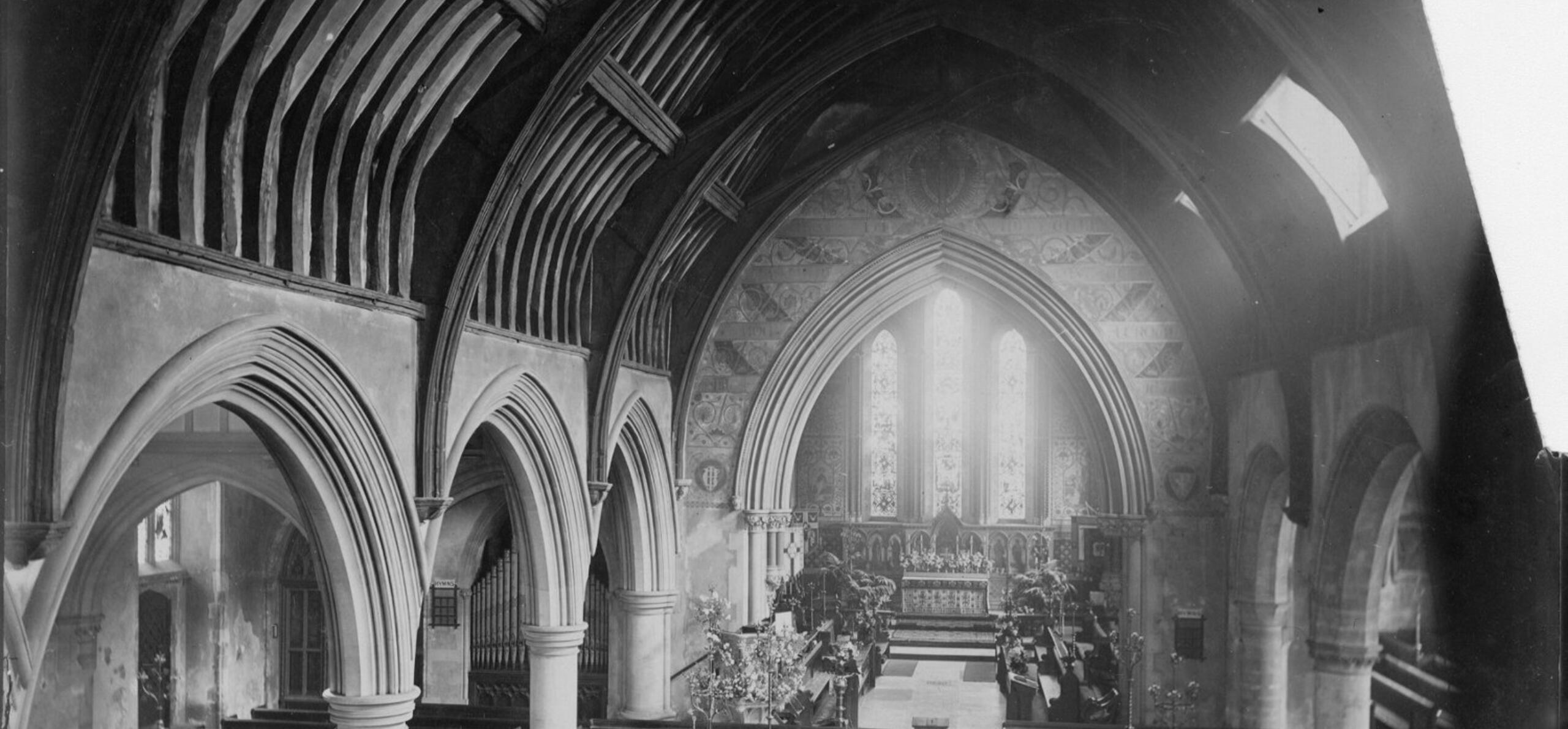Town church, abbey stones
Reading Minster, also known as St Mary's church, is Reading's oldest church. This is where the town grew up in the Saxon period. In the 1550s it was repaired and improved using stones, lead, tiles and timber from Reading Abbey. Henry VIII had closed the abbey down in 1539 and the materials were reused all over Reading.

An artist's impression of late Saxon Reading clustered around the Minster church and market at the crossroads, now St Mary's Butts
Digging Deeper- Saxon nunnery and minster
The Reading Minster Church of St. Mary the Virgin is the likely site of a nunnery that was probably founded in the reign of Edgar (959-978 AD). By the 10th century Minster was a title used for the most important church in an area, sometimes with pastoral or administrative responsibilities. The Domesday Book records that it was held by Abbess Leveva in 1066, but in 1071 the church and lands were given by William I to his new abbey at Battle, founded to commemorate his victory at the Battle of Hastings. In 1121 the church and lands were given by Henry I to Reading Abbey. The link to Battle Abbey is still remembered by Battle Library, Battle School and Battle ward in west Reading.

11th century stone oil lamp excavated at The Oracle centre site in 1997, it probably came from the nearby Minster (museum object no. 1996.195.ST815)
Cook house
Archaeologists investigating the site of the Oracle shopping centre in the 1990s, found the remains of a small building from the 12th or 13th century at the junction of Gun Street and Minster Street. They think it was a ‘cookhouse’ owned by the abbey, where ordinary people could get a simple hot meal.
The Oracle
After the its dissolution Reading Abbey stones were also used nearby to roof over the Holy Brook, where it runs underground to the Kennet, and at the Oracle, an seventeenth century poorhouse, set up by local businessman John Kendrick to create weaving jobs in the town. You can see the original Oracle gates at Reading Museum.

A reused stone corbel from Reading Abbey found at the Oracle. You can see this in the Window Gallery at Reading Museum (museum object no. 1996.195.sf211)

A detail from The Oracle Gate by Joseph Murray Ince, 1826

John Kendrick, 1632 portrait. He left money in his will to set up The Oracle poorhouse.
The road across the churchyard has always been busy. Compare the traffic today with this early twentieth century postcard.

A postcard of St Mary's Butts with one of Reading's Edwardian electric trams





